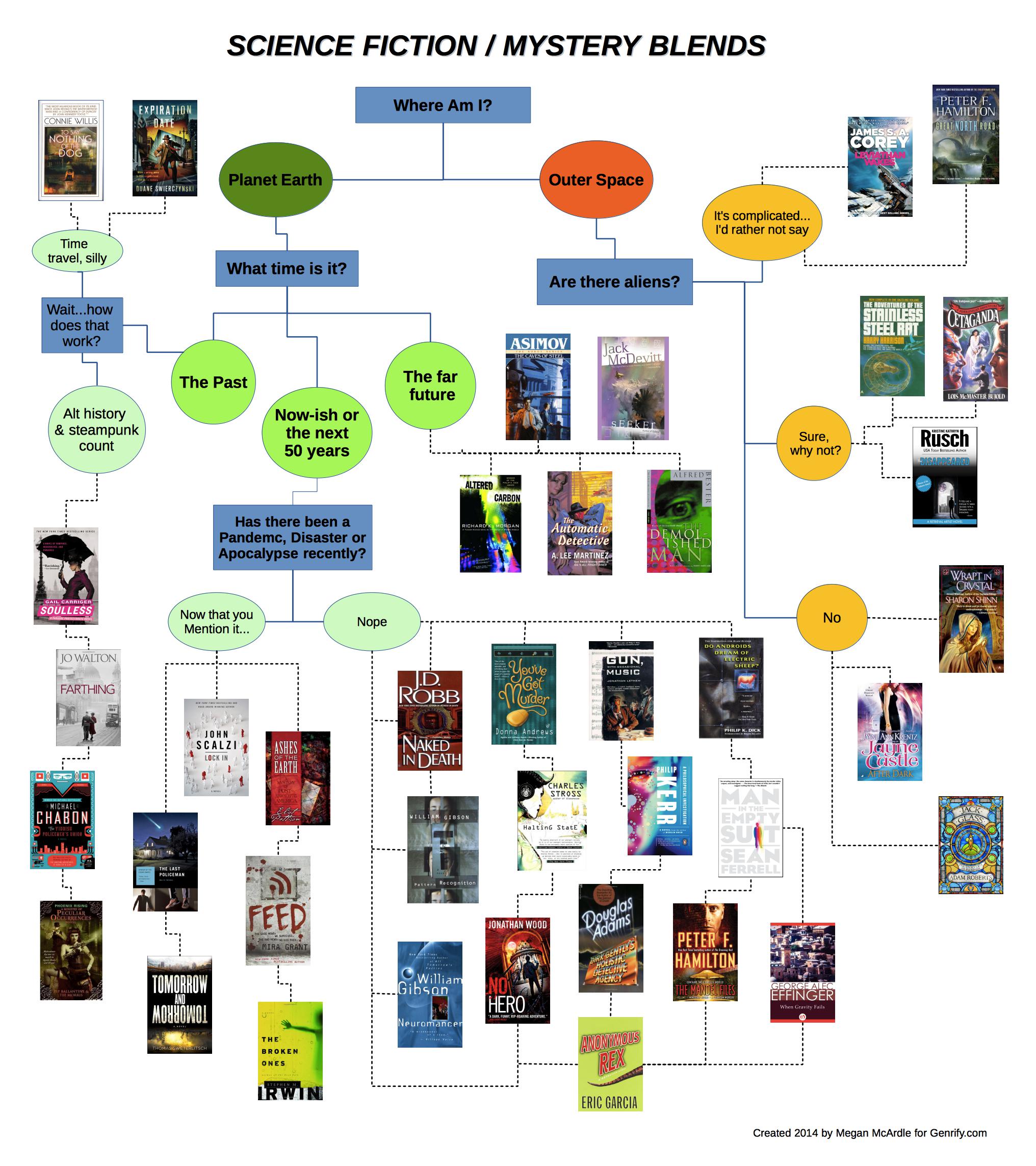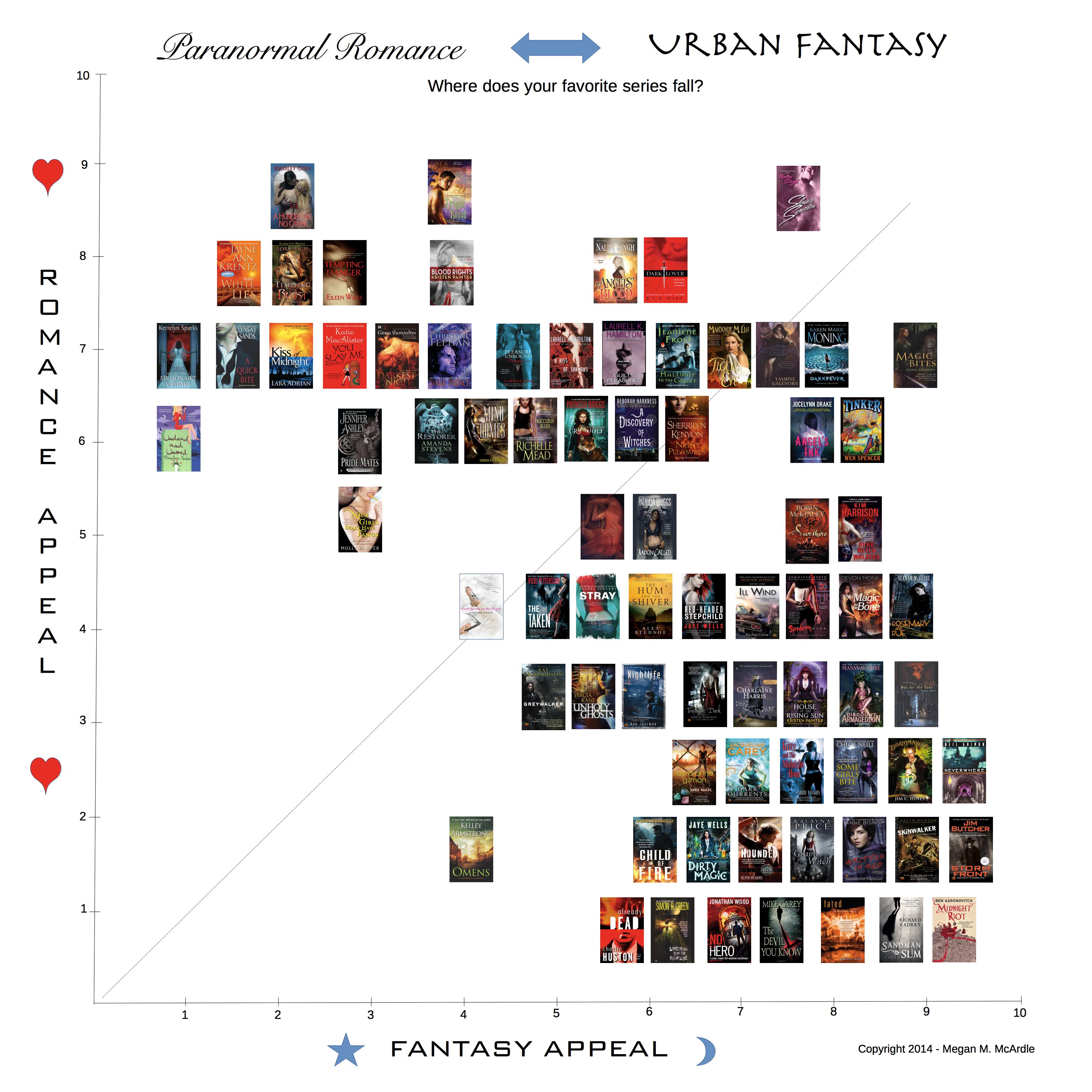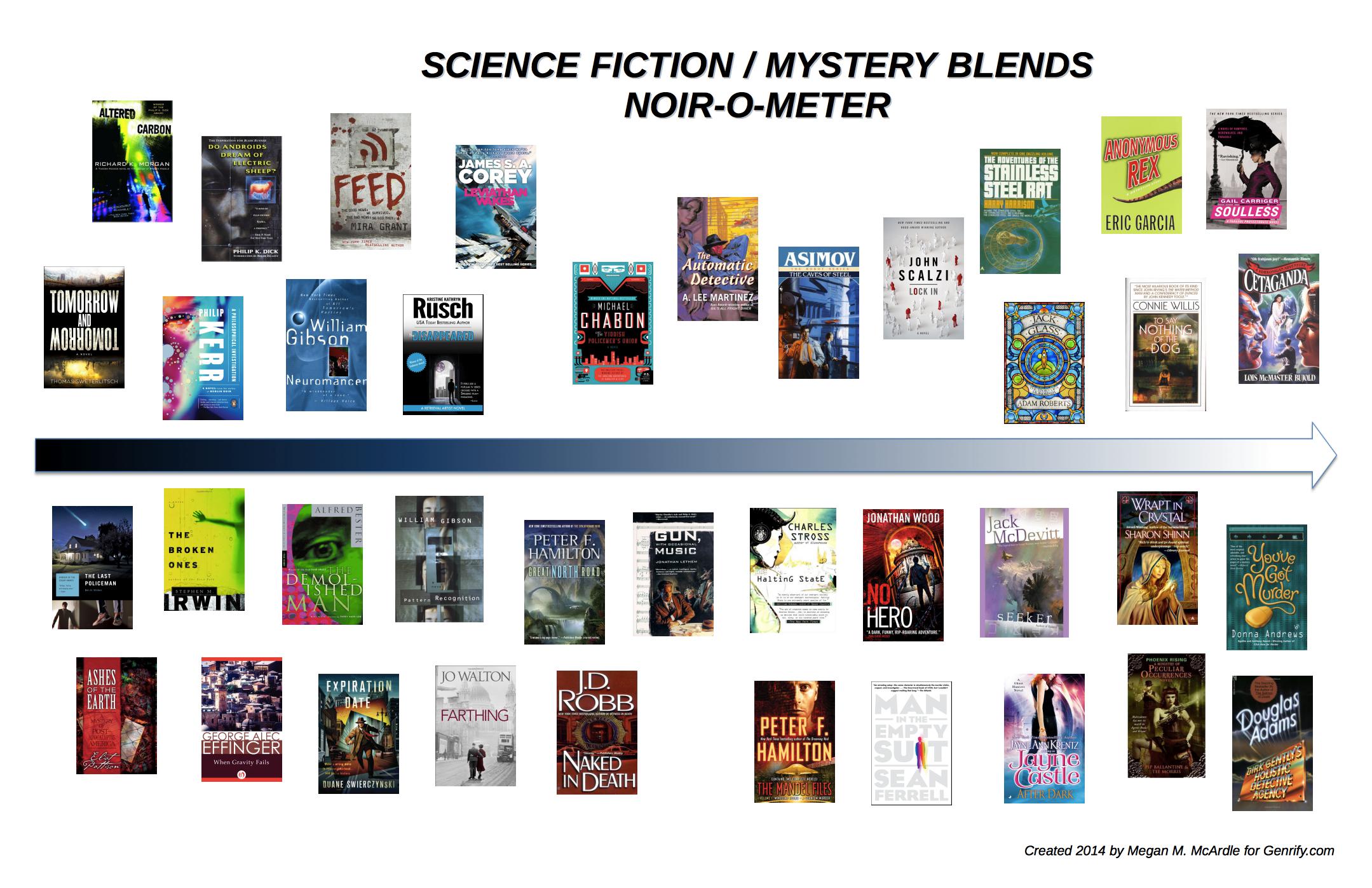I recently decided to chart another genre, this time post-apocalyptic fiction. I love the genre, which has more variety that most people suspect. Why do we love books about the end of the world? In a way, it is the ultimate triumph-over-adversity narrative. Whether ante-, mid- or post-apocalypse, the end of the world as we know it is a pretty good conflict for characters to strive against. Usually characters are a big part of the appeal in apocalyptic fiction. You need characters you can root for to SURVIVE. Readers like to imagine how they would behave in the world possible scenario of a world-ending catastrophe, and these books can showcase the best in humanity, while it usually also shows us a vivid portrait of the worst we can do to each other. (more…)
Category: infographic
Urban Fantasy versus Paranormal Romance
(click to embiggen!)
Urban Fantasy and Paranormal Romance. There seems to be lots of people who love one but not the other. In most classification schemes and in my book (The Readers’ Advisory Guide to Genre Blends), urban fantasy is technically a subgenre of fantasy, and paranormal romance is a subgenre of romance (just as the names imply!), but the reading reality has always seemed more fluid to me. I read a lot of series that fall under one or another of those subgenre headings, and I’ve never been particularly fussy about what label gets printed on the spine. When I was in charge of ordering paperbacks for a library, I was forced to care about this issue, as I would be the one that would decide whether a book went on the “ROMANCE” spinner or the “SF/FANTASY” spinner. And believe it or not I found it surprisingly difficult at times. Sometimes I would violently disagree with the way the publisher had chosen to market a series. Maybe it was a book that had a cover and a subject heading that screamed romance and I thought it would appeal as much (or more) to fantasy fans. Maybe the book was all moody urban fantasy on the outside but all steamy romance between the covers. It was then that I started to think about these books all living on more of a spectrum: all books that shared a real-world, present day fantasy landscape and almost always included a crime/puzzle/mystery plot line. The difference was simply in the amount of romance.
Featured Blend: Science Fiction Mysteries Noir-o-Meter
Yesterday, I presented a flowchart that would allow a reader to navigate a plethora of SF Mystery blends depending on what kind of plot they were looking for. But plot is by no means the only way that readers determine what they want to read next. For a lot of readers (especially mystery readers, I think), they are looking more for a certain tone in their mysteries. Some like things dark and gritty, other prefer a lighter cozy with a minimum of violence. These shades of tone are present in blends that include mysteries too.
I think that it’s interesting that so many blends that include a mystery go self-consciously for the trappings of a particular subgenre: noir. Although non-readers think noir is all about film, but the dark, cynical and fatalistic tone that directors brought to the many, many film noir movies from the 40s and 50s is equally present in books from the same era. But I think we can thank film for locking in the imagery of a lone investigator in a trench coat, beset by femme fatales and double-crossed by those he trusts most. The reason we continue to see mysteries with these elements is because 1) They WORK. Dark brooding protagonists working slightly outside the law and with the rich and powerful arrayed against them are crazy appealing. 2) You can use small cues like a fedora to conjure up a whole mood. Shortcuts are awesome.
But even if a detective is in a fedora, that doesn’t necessarily make the book noir. And here I mean specifically books that are dark. Super dark. On my graphic, some of the darkest are novels that start from the SF premise of the end of the world, and add a mystery. Ben H. Winter’s truly marvelous series that starts with The Last Policemanis an example of one of those. Just as there are mysteries that look at the darkest impulses and actions of man, so does some SF. Although there are many SF writers that look to the future and see possibility and progress, there are just as many (maybe more) that see the shadowy paths that technology can take us on. They look to the future and see that humanity will probably take all their bad habits forward with them, including killing each other. The dark side of technology plus murder? These can be some pretty grim books.
But it’s not all gloom and doom! Looking at the right side of the chart, there are mysteries that are low-violence puzzle plots with an SF twist (You’ve Got Murder), whimsical time travel stories with romance and a cozy mystery (To Say Nothing of the Dog), and undercover dinosaur private investigators (Anonymous Rex). In between there’s a nice variety of social SF, space operas, and near future thrillers. So pick your place on the spectrum below, from the darkest and bleakest to the funny and lightest. There’s an Science Fiction Mystery for everyone.
Featured Blend: Science Fiction Mysteries Flowchart
This year there have been a couple of great new SF/Mystery blends published. I already blogged about Tomorrow and Tomorrow, which I loved. This month there’s John Scalzi’s latest Lock In, which is a fascinating look at a crime committed in a society recovering from a pandemic that left a sizeable portion of the population unable to interact with the world without the aid of technology, locked in to their heads. But there are so many more! While you could use the blender to get a full list, one thing that I love about genre blends is that are so many ways to mix genres together that no two blends read the same. I thought it would be fun to put the blends together in a flowchart to show off the variety just in plots. Click to embiggen! 

